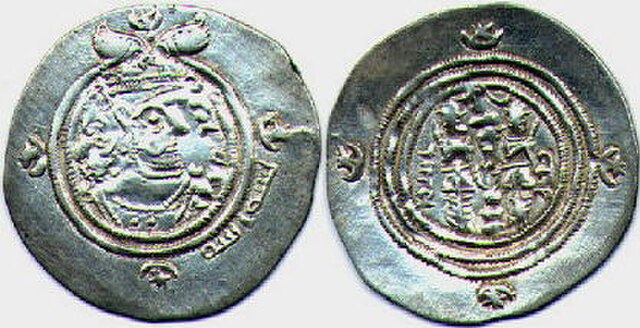The Islamic Golden Age was a period of scientific, economic and cultural flourishing in the history of Islam, traditionally dated from the 8th century to the 13th century.
Improvements to the astrolabe were one of the achievements of this era
The Christian physician Hunayn ibn Ishaq lead the translation of works
A manuscript written on paper during the Abbasid Era.
Organized instruction in the Cairo Al-Azhar Mosque began in 978
The history of Islam concerns the political, social, economic, military, and cultural developments of the Islamic civilization. Most historians believe that Islam originated with Muhammad's mission in Mecca and Medina at the start of the 7th century CE, although Muslims regard this time as a return to the original faith passed down by the Abrahamic prophets, such as Adam, Noah, Abraham, Moses, David, Solomon, and Jesus, with the submission (Islām) to the will of God.
Coin of the Rāshidūn Caliphate (632–675 CE). Pseudo-Byzantine type with depictions of the Byzantine emperor Constans II holding the cross-tipped staff and globus cruciger.
Close-up of one leave showing chapter division and verse-end markings written in Hijazi script from the Birmingham Quran manuscript, dated between c. 568 and 645, held by the University of Birmingham.
1314 manuscript illustration by Rashid ad-Din depicting the Negus of medieval Abyssinia declining a Meccan delegation's request to surrender the early Muslims.
The rāshidūn caliphs used symbols of the Sasanian Empire (crescent-star, fire temple, depictions of the last Sasanian emperor Khosrow II) by adding the Arabic expression bismillāh on their coins, instead of designing new ones.








